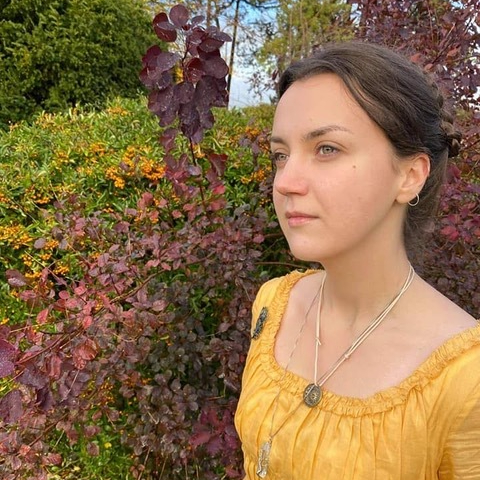Welcome to SPACE, our adult continuing education program which offers interactive monthly courses for personal enrichment! Learn more here.
Dr. Anna Milon
SPACE Preceptor
Fascinated by all things fantastical, mythological, and occult
Dr Anna Milon is an independent researcher working at the juncture of witchcraft studies, speculative fiction studies, environmental humanities and game studies. She completed her thesis, ‘The Horned God as Environmental Figure in Fantasy Fiction and Live-Action Role Play’, at the University of Exeter, and most recently held a postdoctoral post at Nottingham Trent University.
[see full bio...]

Current and Upcoming Modules
January 2026
Highlighted Modules
All Modules
Meeting the Horned God of the Witches
Lecture-based Low intensity
The Horned God, alongside being modern paganism's most popular deity, enjoys a rich heritage in speculative fiction and popular culture. In this module, we will explore his ancient (and modern) origins, his appearances in both esoteric and popular literature, and his surprising role as an environmental figure. Throughout the module, students will gain familiarity with the four core figures that make up the Horned God (Pan, Cernunnos, the Sorcerer of Trois Freres, and Herne the Hunter), and key narratives associated with him. They will also have an opportunity to ponder the complex web of influences between modern paganism and speculative fiction.
This module builds on the work of Margaret Murray and the module 'The Witch-Cult Hypothesis', but does not require prior knowledge of the material covered there.
This module builds on the work of Margaret Murray and the module 'The Witch-Cult Hypothesis', but does not require prior knowledge of the material covered there.
The Witch-cult Hypothesis and Its Afterlives
Mixed Lecture/Discussion Low intensity
Imagine a witch. Perhaps, she is a solitary crone, living in a cottage on the outskirts of the village, in equal measures reviled and grudgingly respected by the villagers for her knowledge of midwifery and healing herbs. Perhaps, she is a self-possessed attractive young woman, persecuted by an oppressive authority for her feminist outlook. Perhaps, she is sexually liberated, she conducts strange rituals tied to the land’s fertility, she speaks of the Old Faith as a secret knowledge passed on in secret alongside the official religion. This image of the witch owes much to Margaret Murray’s Witch-cult Hypothesis, an idea that people accused of witchcraft in the medieval and early modern period in the Western world, were the inheritors of a prehistoric fertility cult, which survived as a covert practice alongside Christianity for millennia. Despite being rejected as academically spurious, Murray’s work continues to be incredibly influential for practitioners of modern witchcraft and in popular culture.
In this course, we will take a close look at Murray’s claims, and place them in a historical and cultural context. We will venture outside the academic setting to read witchcraft handbooks and genre fiction, where the witch-cult hypothesis continues its fascinating afterlives.
In this course, we will take a close look at Murray’s claims, and place them in a historical and cultural context. We will venture outside the academic setting to read witchcraft handbooks and genre fiction, where the witch-cult hypothesis continues its fascinating afterlives.
The Witch in Fact and Fiction
Lecture-based Low intensity
The witch is one of the most contentious figures of the present day: from victim of persecution to stock character to magical practitioner the witch embodies our fears and desires. In the Anglosphere, the witch has been actively reimagined since at least the late nineteenth century. This module tackles some popular myths associated with the witch, explores their origins, and ask how these myths are used today.
Are witches always female? Why do they fly on broomsticks and wear pointy hats? And where does a witch’s magic come from? The module answers these and other questions using a mix of historical, esoteric, literary and critical texts that get to the crux of how witches are depicted in fiction and history, and what witches themselves have to say about that.
Are witches always female? Why do they fly on broomsticks and wear pointy hats? And where does a witch’s magic come from? The module answers these and other questions using a mix of historical, esoteric, literary and critical texts that get to the crux of how witches are depicted in fiction and history, and what witches themselves have to say about that.
